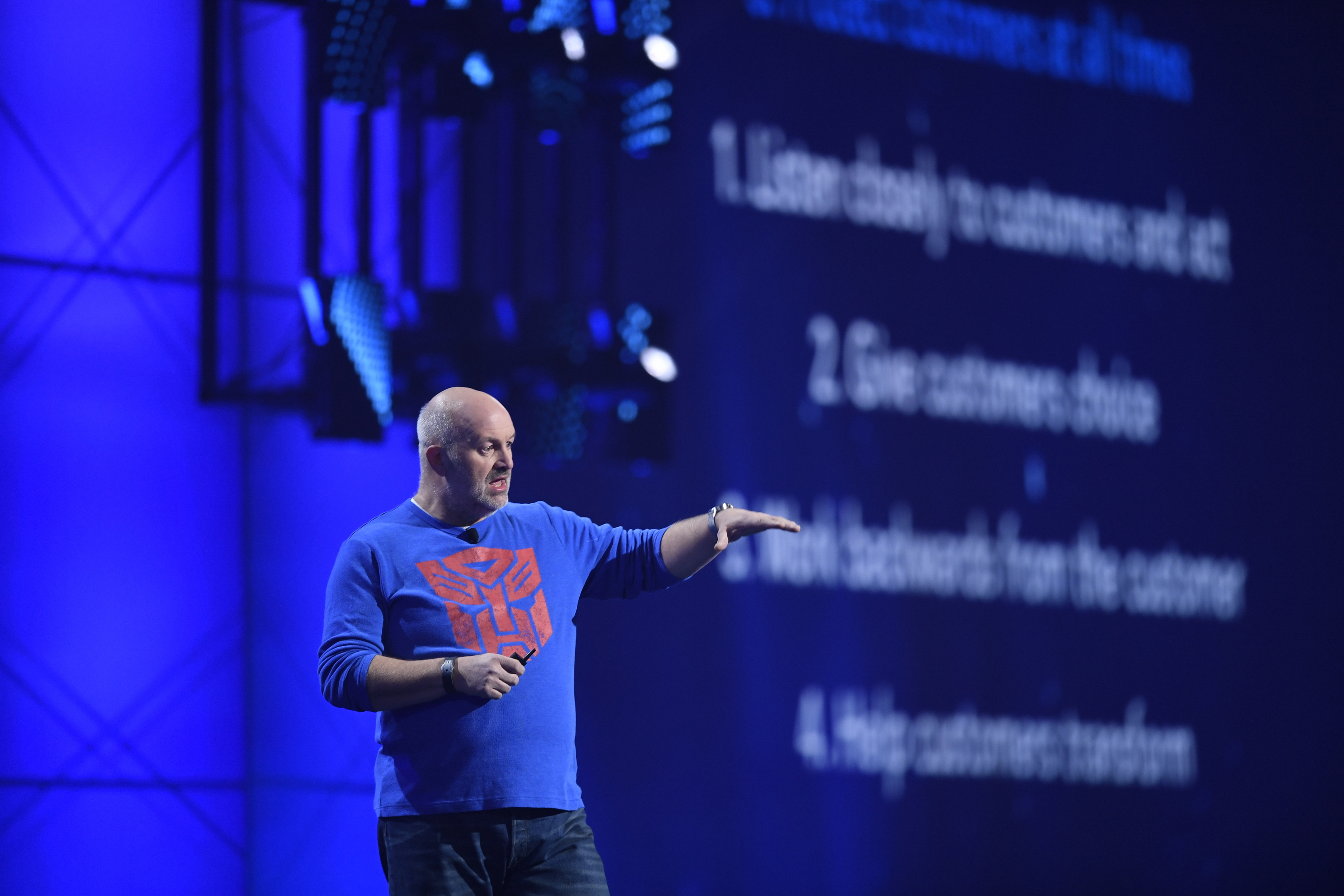
An annual run rate of over $12bn, a cloud that is 10x bigger than its next 14 competitors combined and a conference with 32,000 attendees – over 10,000 more than the previous year. It’s pretty safe to say that things are going well for Amazon Web Services.
A recent report from 451 Research said that 2017 will see an AWS+1 strategy, meaning that the cloud company will almost be the default choice for cloud alongside another provider in 2017. The success of shouldn’t be undervalued.
“AWS is still the biggest player in the cloud space. In a decade AWS has achieved revenues of $12bn and an enterprise value of some $150bn, or half the market cap of Amazon.com. Looking at it another way – it took IBM a century to reach the same valuation,” said William Fellows, 451 Research vice president.
Yes we are talking about very different generations, so where IBM was one of the first to really invent the modern technology era, AWS isn’t, in so far that technology was already prevalent in the 2000’s when AWS first appeared.
For who adopted it, Cloud, in its many forms, has become essential to the running and success of a business.
The traditional B2B enterprise IT market continues to dwarf cloud by size. but cloud is is eating into it and all the research points to cloud computing becoming the dominant operating model – it is just a question of when.
AWS is currently at the top of that disruptive market in its own segment and it’s been showing what a modern technology company can do at its annual re:Invent conference in Las Vegas. Quora put attendance at the 2015 conference at around 19,000, that has rocketed to 32,000 in 2016.
I’ve attended and covered dozens of large tech vendor conferences over the past two years and while conferences like Oracle’s OpenWorld comes close to the sheer volume of announcements, nothing touches the 24 made at re:Invent this year.
That number is solely new products and services from AWS, that doesn’t include announcements being made about customer deployments of AWS, which were made by the likes of Workday, or the vast number of announcements made by the AWS partner ecosystem.
There remain serious challenges to overcome for AWS. Growing into highly regulated sectors is one of those challenges, which is why many of the customer examples on stage would come from these areas, such as FINRA.
There is a balance to be struck between flexibility and reassurance for customers. By positioning the cloud as customer friendly, AWS wants the customer to feel in control and is positioning itself as unlike older, more traditional software companies. This position is not unlike that of other cloud providers who maintain that their approach is customer first or customer led, or customer centric. The play is two tier. One tier to reassure the end user, one for the developer community.
Read Next Page: Why did Werner Vogels hate his relationship with software vendors – Clue: Guess who was in charge?
Werner Vogels, CTO, Amazon.com, said during his day two keynote that the company starts with its customers and works backwards, it wants to give power to its users because Amazon experienced what it’s like to not be in charge.
Vogels said: “I truly hated the relationship with vendors. I felt they were in charge and I was never in charge, it was so counter to the culture we had at Amazon.”
By unveiling a whole host of developer tools into the AWS service it is aiming to help customers to better manage their cloud applications.
This is highlighted by products such as X-Ray, a fully managed service to analyse and debug distributed applications in production. The tool will provide a visual way to trace and debug issues.
Jeff Barr, chief evangelist for AWS wrote on the company’s blog: “We have made it possible for you to trace requests from beginning to end across all of the touch-points that I just mentioned. It addresses the problems that come about when you want to understand and improve distributed systems at scale, and gives you the information and the insights that you need to have in order to do this.”
That’s far from the only developer focused release as further examples can be seen with AWS CodeBuild, a set of management tools that coders can use during development. It’s a pay-per-minute service that can be used to test code for AWS applications on both cloud instances and within instances.
Then there is AWS Glue, which is basically a tool that is designed for automatically running jobs for cleaning data sources from multiple sources, that data is then ready to be analysed in other tools. And AWS Blox, a collection of open source projects that will help developers to build schedulers and to integrate third party schedulers on top of ECS, which can be used to manage and scale clusters at the same time.
While there have been plenty of examples of the company appeasing its core developer base, there are also examples of it looking to appeal to enterprises.
Read Next Page: What are the major types of denial of service attacks and how can they be stopped?
Vogels said that the majority of denial of service attacks are Volumetric (64%), while 18% are State Exhaustion and 18% are application layer attacks.
So, to help combat this AWS revealed Shield, Shield Standard and Shield Advanced. Shield is a managed service that is designed to protect web applications against DDoS attacks. It works with Elastic Load Balancing, Amazon CloudFront, and Amazon Route 53.
Shield Advanced is said to provide additional DDoS mitigation capabilities for volumetric attacks, intelligent attack detection and mitigation for attacks at the application and network layers.
 The company has decided to turn on Shield for all of its users.
The company has decided to turn on Shield for all of its users.
Then there are the hot topic developments, open source and containers have already been covered, the next big area is artificial intelligence.
Rekognition, will allow developers to add image analysis to applications using deep learning based image and face recognition. Polly turns text into lifelike speech and lets app users talk in 47 different voices in 24 languages. Lex, the technology that powers Amazon Alexa, has been released so that developers will be able to build conversational user experiences across web, mobile, and connected device apps.
AWS ends the year on a high and gave its competitors plenty of food for thought for how in 2017 they can match and surpass the market dominant cloud player.






